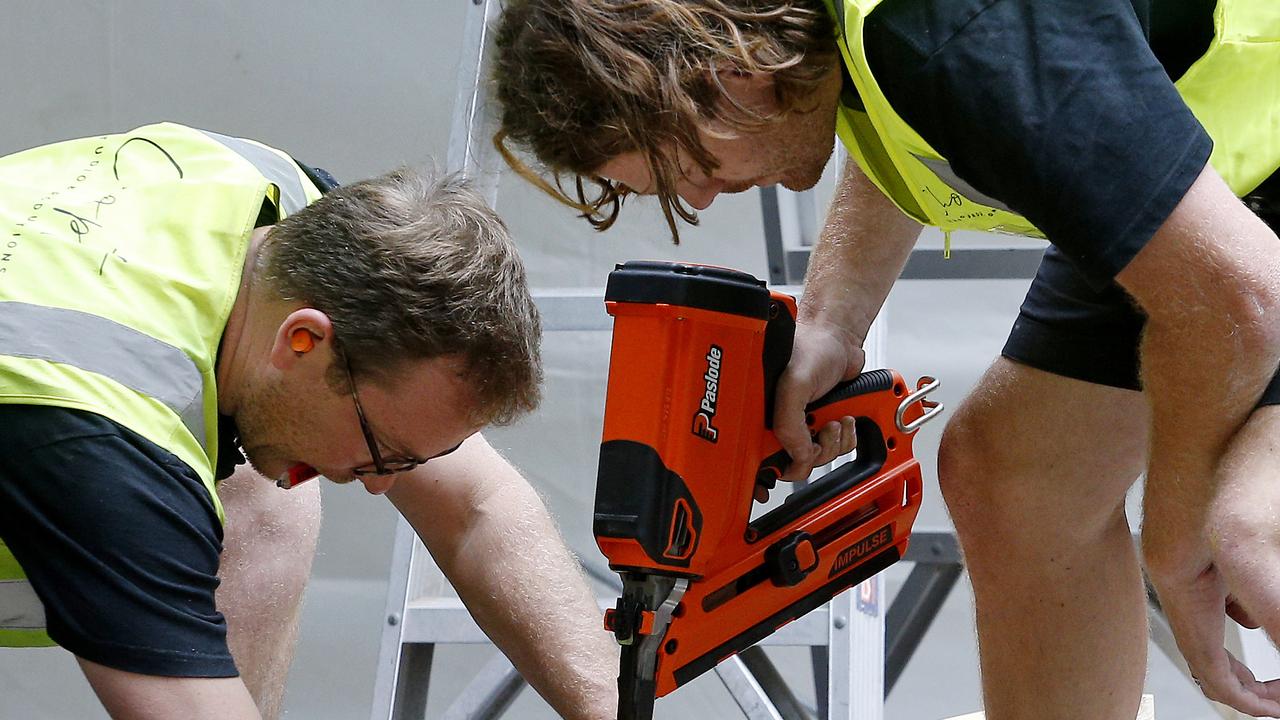‘Mouse shuffle’: Worrying new trend emerging among remote workers
There is a concerning new trend that’s started to emerge among remote workers – and it’s one that spells bad news for bosses.

At Work
Don't miss out on the headlines from At Work. Followed categories will be added to My News.
As the debate over working from home continues to rage, there is a new trend that has started to emerge among remote workers – and it is one that bosses should be worried about.
The working from home debate reached new heights in Australia this week when NSW Premier Chris Minns announced remote working privileges introduced in 2019 would end, with all public servants now being forced back into the office.
The announcement immediately caused an outcry from government workers who have adapted their lifestyles around working from home, with many branding the move “out of touch”.
Fully remote or hybrid working arrangements have become the norm across many industries since the Covid pandemic, with flexible working offering a renewed sense of work-life balance for millions of Australians.
However, the transition to hybrid working hasn’t been without its hiccups. Failure from employers to fully embrace this new model and adapt to the changes it brings to the workplace have been behind some of the issues that have manifested.
Most recently, it has resulted in the rise of the “mouse shuffle” trend among remote employees.
This is where workers feel the need to feign visible productivity by constantly moving their mouse so as not to appear inactive during work hours, according to David Campbell, a workplace consultant at Canberra based company Brand Rebellion.

This is often because employees feel compelled to continuously appear busy even if they are meeting their output expectations.
But why are workers doing this? Surely if they are actually getting their work done then they wouldn’t feel pressured to “appear busy”, right?
Unfortunately, this is not always the case.
The shift to remote work has also brought with it a rise in organisations using software to monitor productivity.
Melbourne-based HR expert Georgia Russell told news.com.au this has prompted a shift in employee behaviour.
“We used to talk about ‘presentee-ism’, which was behaviour like making sure your jacket was on the back of the chair to prove you were there at the office, and now employees feel compelled to ‘shuffle the mouse’ to demonstrate they are working, implying they are engaged and productive,” she said.
Ms Russell, who is the Executive Director, Consulting & Product Innovation for HR consultancy Shilo, said that this situation is most commonly being seen in companies that have not fully adapted to the ways of remote working.
Companies in this position often continue to value “traditional productivity measures” over focusing on actual output and results.
Ironically, this can have actually have the opposite effect and negatively impact real productivity, along with employee wellbeing and overall workplace culture.
“The pressure to constantly demonstrate that you are ‘working’ by shuffling your mouse drives stress, reduced job satisfaction, and enjoyment. It stops the focus on real productivity in a drive to appear busy,” Ms Russell said.
“A culture of monitoring drives a lack of trust and engagement and ultimately can lead to regrettable turnover for organisations.”
Mr Campbell noted that this “worrying trend” will only end when companies start trusting their employees more and focus on the work they produce, instead of “how much they seem to be working”.
“Better work-life balance and happier employees would be the result,” he said.
“By fostering a culture that values output over visibility, employers can mitigate the mouse shuffle trend and cultivate a healthier, more productive, and engaged workforce. It’s time to bid adieu to the era of ‘busywork’ and embrace a future where trust and results reign supreme.”
Earlier this year, one of America’s biggest banks fired numerous employees for allegedly faking work.
Wells Fargo & Co, one of the “Big Four” banks in the United States, sacked the workers after an investigation, according to filings with the Financial Industry Regulatory Authority.
The workers were accused of simulating “keyboard activity” to create the impression they were actively working.

The overarching phenomenon causing trends like mouse shuffling has been branded “productivity theatre”.
Last year, a report published by IT Consulting and Staffing company, Viser, found that of the 1000 US employees surveyed, almost half were spending more than 10 hours a week on tasks with the sole purpose of making them appear busy.
The most common performative behaviour was responding to colleagues via email/instant message as promptly as possible, even when an immediate response was not necessary.
Others reported scheduling emails to be delivered at a future time and keeping their laptop screen awake while not actively working.
Workers with employers who use surveillance tools were more than twice as likely to prioritise performative tasks over more productive actions than those employees at companies without surveillance tools.
Ms Russell said this latest trend among remote and hybrid workers highlights the need for a “cultural and organisational shift”, with employers urged to focus on valuing outcomes and impacts over visibility.
“As hybrid working becomes the way we work in Australia, we must adapt practices to build trust, support employee wellbeing, and focus on meaningful productivity metrics,” she said.
“A successful transition to hybrid work requires rethinking traditional productivity measures, investing in supportive technologies, and fostering a culture of trust and autonomy.
“It also requires an investment in leadership development to enable and empower leaders to create a local culture and workplace environment where trust exists, outcomes and outputs are valued over ‘time at work’, and psychological safety is built to allow open and honest conversations.”
Originally published as ‘Mouse shuffle’: Worrying new trend emerging among remote workers









